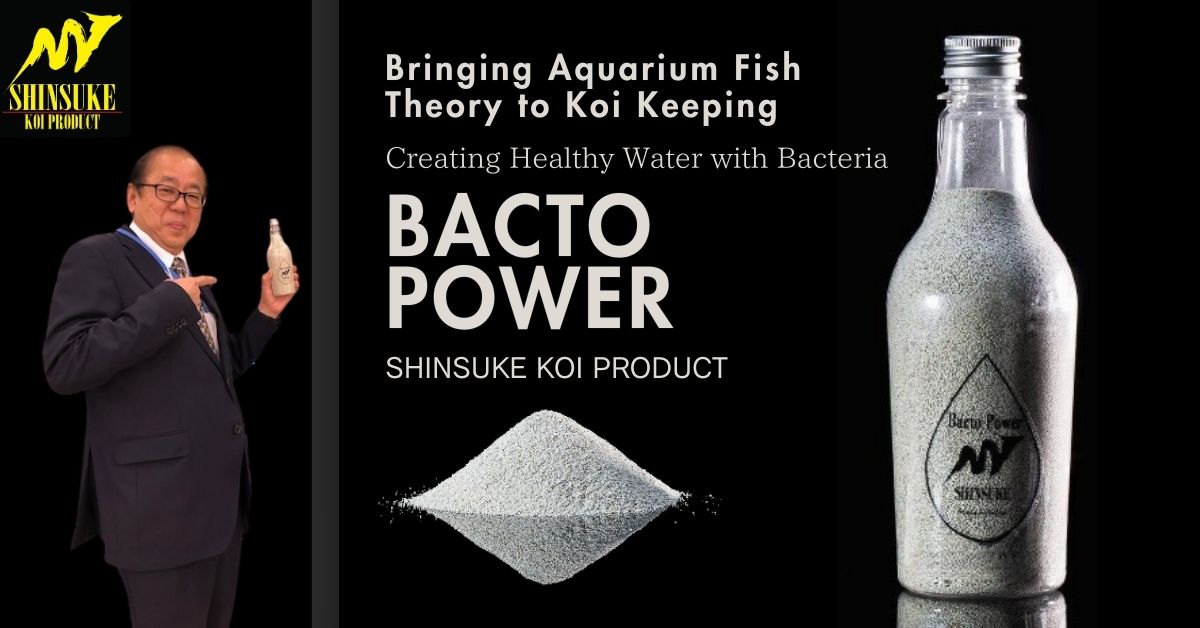
Enhance Koi Environment with the Amazing Bacto Power
This is an interview by a reporter from RINKO MAGAZINE and Yoshihiro Yamamura, CEO and developer of Shinsuke Co., Ltd. who brings aquarium fish theory to koi keeping to Beneficial bacteria for ponds. He has described his unique process in a series of interviews we are now publishing on kodamakoisupply.com.
Read on to learn from this water quality expert, on how organic pond water treatment with beneficial bacteria released with Bacto Power, works to efficiently create better overall water quality in your pond.
Interview with Yoshihiro Yamamura on Shinsuke Method
Yoshihiro Yamamura, CEO and developer of Shinsuke Co., Ltd., has been involved with the tropical fish industry for 35 years, learning and practicing theoretical water purification. Many famous koi farms such as Sakai Fish Farm, Dainichi Koi Farm, Isa Koi Farm and more have recognized the effectiveness of Shinsuke Koi products.
In this interview, we talked about the importance of beneficial bacteria in your water.
Interviewer: A Koi hobbyist I know once told me “I did not know about water until I started raising tropical fish.” Because of your involvement in the aquarium fish industry for 35 years, you must know a lot about water treatment. You have studied fish keeping for a long time, haven’t you?
Yamamura: Yes, that’s right. I have visited InterZoo, the world’s largest pet show held in Germany, about nine times. I was amazed by what I saw in Germany. I also became a distributor of a German aquarium fish brand, so I believe I have enough knowledge and experience in water treatment. If you don’t understand water, you can’t explain it and sell products. Just as we say “we need to make good solid to grow plants,” we need to make good water to raise Koi.
Interviewer: Most koi are kept in ponds, and since Koi are hardy fish, fewer people think about water quality as seriously as they do with tropical fish.
Yamamura: In Europe, like Germany, the water is hard, so it’s not really suitable for keeping fish. That’s why they have advanced water treatment theories. Water is the living environment for koi. So if we pay more attention to water, Koi’s condition should improve more.
When I checked the water quality of a Koi tank at a dealer’s place, it looked murky. The ammonia level was 1.5 mg/L, and the nitrite level was 0.8 mg/L. The nitrate level was 50 mg/L, which is acceptable. But overall, the water quality wasn’t good. After using our product, the water clarity improved a lot in 5 days. I saw no leftover food. Koi’s appetite came back.
When we tested the water again, the ammonia level had dropped to 0.1 mg/L, and the nitrite level had dropped to 0.3 mg/L. After another week, both levels were almost zero. The water was crystal clear.
Interviewer: That’s amazing! How did you achieve this? Please tell us about the Shinsuke method.
How Beneficial Bacteria is a Key Water Treatment
Interviewer: You first released “Bacto Power” as the first line of Shinsuke products. It looks like sand, but is it a type of filter material?
Yamamura: What you see is zeolite, but it actually contains bacteria.
Interviewer: What inspired you to develop “Bacto Power”?
Yamamura: It was when I visited a dealer. He said, “Koi dealers are always fighting with ammonia and nitrite.” When I saw their filter tank, I thought the bacteria for biological filtration weren’t working well, so the water quality wasn’t good.
Interviewer: I understand. Without the help of bacteria, it’s hard to make good water. By the way, I thought bacteria products are usually in the form of liquids…
Yamamura: Bacteria can work if they have organic matter to feed on and the right water temperature. But if you put bacteria in a sealed liquid bottle, as you know, they like and need oxygen. They will use up all the oxygen and most will die. I believe only some bacteria enter a dormant state and stay alive. I did not think that liquid form of bacteria products on the market were good. So, we developed Bacto Power.
Interviewer: I see. Bacteria die without oxygen, don’t they?
Yamamura: Our “Bacto Power” is a “pure culture freeze-dried” product. It means we quickly freeze and dry 100% pure cultured bacteria using a special technique. Simply put, all the bacteria in Bacto Power are in a dormant state.
Interviewer: So, when they come out of dormancy, all the bacteria you add become active?
Yamamura: Yes, when you add “Bacto Power” to the filter tank, the bacteria start working in about 3 to 5 days, depending on conditions.
Interviewer: Where did you find these bacteria?
Yamamura: I have been in the aquarium fish industry for many years. I used all of my knowledge and network and used my knowledge and connections to develop this product with the help of a big company.
Bacteria are still being researched, and pharmaceutical companies are still going to remote places like the Amazon to find new bacteria. They discover new bacteria every day.
Do you understand how water purification works? What do you think causes water pollution?
Interviewer: Waste and leftover food, I suppose. If pond water gets foamy, it means it’s dirty, and you should change the water.
Yamamura: That means the filtration isn’t working well. If it were, there would be no foam, and the water would be clear. Foam is caused by organic matter like proteins.
Fish waste and leftover food are obvious causes, but dead bacteria and plankton are also pollutants. These pollutants are broken down by bacteria into amino acids, ammonia, nitrite, and nitrate (see diagram). If purification is working well, the water remains clear. If it turns to sludge, it means the breakdown process isn’t working well.
Effective Pond Bio-Filtration: Natural Methods for a Balanced Aquatic Ecosystem
Maintaining a clean, healthy pond is essential for vibrant aquatic life. Pond biofiltration plays a key role by using beneficial bacteria to purify water. These bacteria facilitate natural pond water cleaning methods, breaking down harmful substances and maintaining clarity. By decomposing organic waste in ponds, they prevent harmful buildup that can disrupt water quality. This process supports an aquatic ecosystem balance with bacteria, ensuring fish and plants thrive. Additionally, these bacteria are crucial for sludge and ammonia reduction in koi ponds, creating a safer, healthier environment for koi. Embracing biofiltration promotes sustainable pond maintenance and long-term water health.
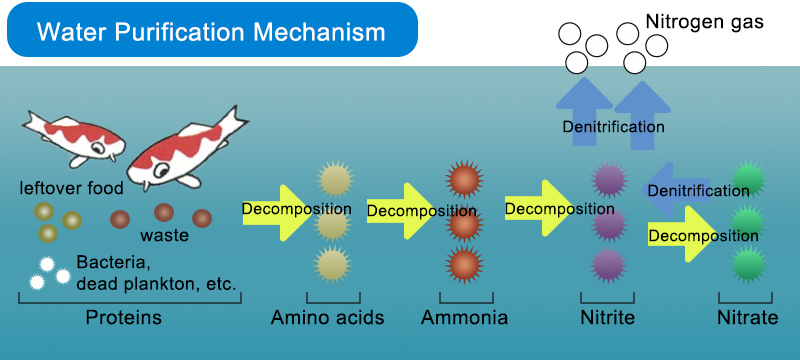
Interviewer: Bacteria are amazing.
Yamamura: Yes, different bacteria work at different stages of the breakdown process. “Bacto Power” contains heterotrophic bacteria that convert organic matter into inorganic matter, and autotrophic bacteria that break down inorganic matter further. Both are aerobic bacteria, which need oxygen.
Interviewer: The goal of organic matter breakdown is nitrate?
Yamamura: Actually, some of the nitrite is released as nitrogen gas into the air. This process is called “denitrification.” If this doesn’t happen, nitrite levels rise, and water quality worsens. Bacteria are involved in this process, too. If all the nitrite turned into nitrogen gas, that would be good, but some bacteria turn nitrite into nitrate, so that doesn’t happen. Also, algae can grow.
Interviewer: If algae grows too much, it doesn’t look good and can clog pipes. During the day, they do photosynthesis, but at night, they respire and can reduce oxygen levels in the pond. If nitrate is broken down, this problem would be solved, right?
Yamamura: If nitrate turns into nitrogen gas, there is no problem. But most denitrifying bacteria are anaerobic.
Interviewer: Most bacteria involved in water purification are aerobic and need a lot of oxygen. Anaerobic bacteria would die in such conditions.
Yamamura: But we found that “facultative anaerobic bacteria” exist.
Interviewer: “Facultative anaerobic bacteria”? What are they?
Yamamura: Simply put, “facultative anaerobic bacteria” can work even with oxygen.
Until now, we thought only strict anaerobic bacteria could do denitrification, and they needed complex systems to work. Their activity was minimal, so denitrification wasn’t enough. I once gave up on including denitrification in the water purification process. But when I heard that there is a bacteria that could denitrify even with oxygen, I felt like I struck gold.
Interviewer: So, “facultative anaerobic bacteria” are the key to water purification?
Classification of Bacteria in Your Pond
Aerobic Bacteria:
- Obligate Aerobes: Need oxygen to grow. Higher concentrations of oxygen than in the air can be harmful.
- Microaerophiles: Need only a much lower concentration of oxygen than in the air. They cannot grow in higher oxygen levels.
Anaerobic Bacteria:
- Obligate Anaerobes: Cannot use oxygen and are killed by it.
- Facultative Anaerobes: Can use oxygen if it’s available but can also grow without it.
- Aerotolerant Anaerobes: Cannot use oxygen but are not killed by it.
Before and After Using “Bacto Power”
At a fish farm, we applied “Bacto Power” to filter material covered in sludge. After a week, the sludge was completely broken down.
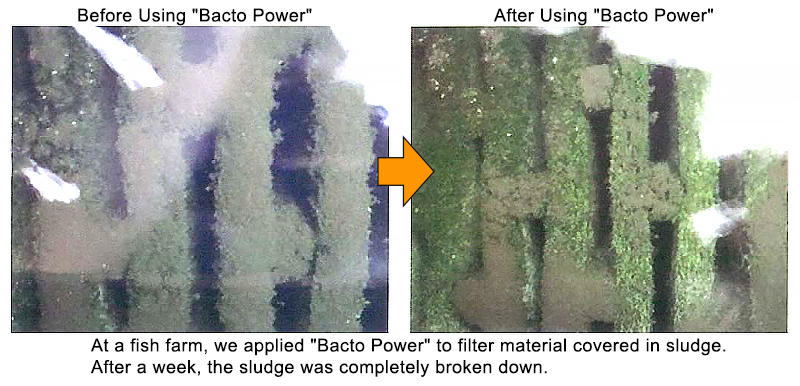
Interviewer: That’s truly groundbreaking! With bacteria that perform denitrification and overall water purification, this product sounds very interesting.
Yamamura: Yes, “Bacto Power” contains 10 types of aerobic, anaerobic, and facultative anaerobic bacteria, with 10,000 to 10 million bacteria per type per litter. It also includes bacteria that produce substances to prevent mold and other harmful microbes, which helps prevent fish diseases.
Interviewer: How do you use it specifically?
Yamamura: Just sprinkle “Bacto Power” directly onto the filter material immersed in the filter tank. The bacteria are attached to the zeolite, so there will be some fine sand-like particles left, but that’s not a problem. Also, make sure to aerate to keep the bacteria active.
Interviewer: How much beneficial bacteria should be used in a pond?
Yamamura: Initially, use 100 grams per ton of water (3.5 oz per 265 gallon of water). After that, add 50 grams per ton of water (1.75oz per 265 gallon) every two weeks. Many of the initially added bacteria will likely die due to sudden environmental changes. Adding new bacteria regularly ensures stable water purification. Since closed pond environments can be tough on bacteria, it’s important to add new bacteria periodically. However, since each pond’s conditions are different, the usage amount and frequency are just guidelines.
Interviewer: By adding new bacteria, you can maintain a better environment continuously. This makes water purification perfect, right?
Yamamura: I’d like to say so, but it’s also important to provide a good habitat for the bacteria.
Interview To Be Continued…
Other Articles About Water Quality by Shinsuke and Kodama
The Power of Minerals in Enhancing the Beautiful Colors and Luster of Koi
Water Quality Management System to Protect Koi Health
You may also check these articles for more Pond Water Quality Tips
Pond Water Quality Management and Testing for Healthy Koi
What Kind of Water is Best for Koi?
When was the last time you changed your pond water?
View All Shinsuke Water Treatments for Healthy Water
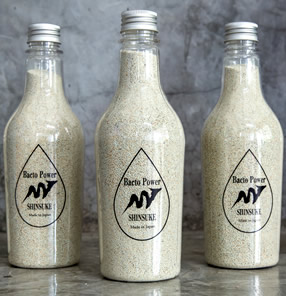
Bacto Power
$55.00Now introducing Bacto Power to our product range. BACTO POWER is a revolutionary water conditioner with a unique blend of facultative anaerobic bacteria, proteolytic enzyme and more than 10 different kinds of aerobic bacteria.
BACTO POWER provides your Koi with ideal environment by
- Helping in the decomposition of organic matter
- Stabilizing pH
- Preventing pollution (Nitrate reduction)
- Promoting the formation of an effective ecosystem
BACTO POWER is cultured and dried to pure at the pharmaceutical level with advanced Japanese microorganism technology.
Improve the health of your pond water and keep pH stable with Bacto Power.
Net 400 gram (Treats 10,600 to 212,000 gallons)
In stock
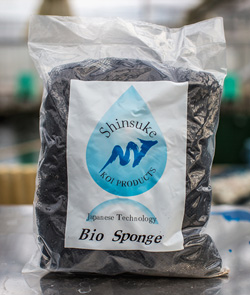
Bio Sponge
$45.00This seemingly ordinary sponge, has a special effect . The material of Shinsuke Bio Sponge is a particular sponge-like material, specifically invented and designed for forming BIO FILM. As such, Shinsuke Bio Sponge has a high retention ratio for bacteria, which is hard to reduce, even when located under water. Shinsuke Bio Sponge is UV ray resistant and is designed for multi-bay filters but is also suitable for moving – bed filters! Use Shinsuke Bio Sponge combined with Shinsuke Bacto Power for the best result.
Improve your water quality with, Bio Sponge’s high retention ratio for bacteria, which is hard to reduce, even when located under water or by exposure to ultraviolet rays.
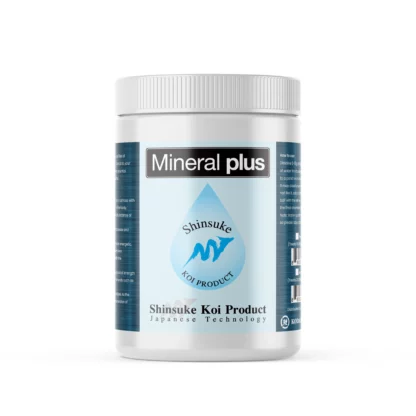
Mineral Plus
$60.00 – $120.00Mineral Plus is our new product, developed on our Shinsuke koi product concept, “Making koi more beautiful with the ideal surrounding.”
Koi in a Japanese mud pond get a lot of natural minerals, which very often are missing in a concrete pond. These minerals provide better growth, good structure and a healthy immune system . Shinsuke Mineral Plus also ensures the colors of the Koi come up well. Shinsuke Mineral Plus is a mixture of natural minerals and trace elements, but it’s most unique by the extra micro minerals.
Add minerals to make pond water the same quality as mud pond water.

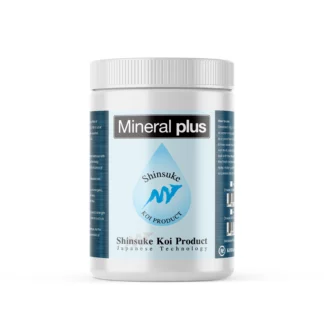
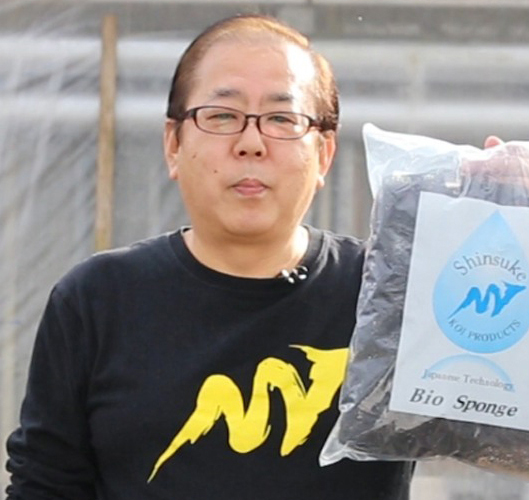
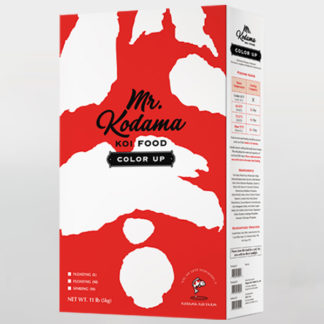
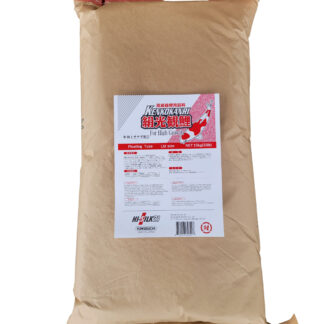

If I need to use 100 gr for 1000 liters of water this would mean that for my 30.000 liter pond I need 3 kilo of Bacto Power the first time and after that every two weeks half of that ( 1.5 kilo ).
This would mean 8 bottles of 400gr the first time and after that 4 bottles. Total 12 x 55 $ = 660 $
A little bit expensive no?
Hello, thank you for your question. it is actually, 100 gram for 10,000 litters. so you use 1/10 of what you calculated. it is not that bad right?
Question on the Bacto Power. I have 3 large Koi ponds. I don’t have a filter system, just pads the sit in the skimmers. Is that were I add the power?
Yes, if the skimmers are the only place where you have filter media, then that is where you should add the Bacto Power. While it’s difficult to provide specific advice without seeing your ponds, we highly recommend adding more biological filtration beyond just the skimmers to ensure the health and well-being of your Koi.